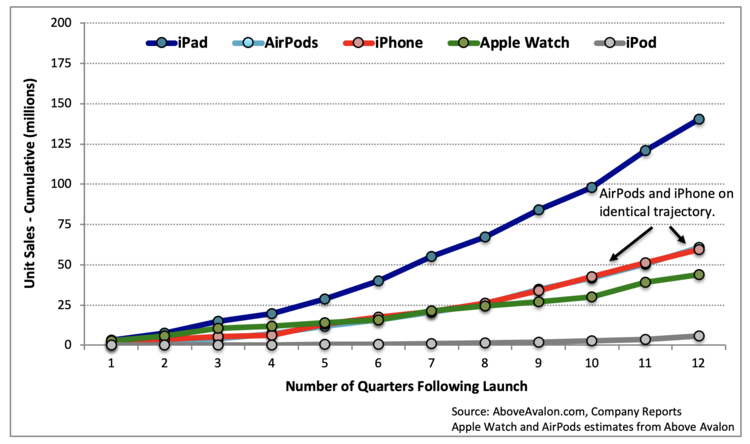Our changing media reality means everyone in music will have to come to grips with three important new trends.
Understanding the music business means understanding how people access, discover, and continuously listen to music. This used to be the record player, cassette player, radio, cd player, and now increasingly happens on our computers and smartphones. First by playing downloads in media players like Winamp, Musicmatch Jukebox, or iTunes, but now mostly via streaming services like Spotify, Apple Music, but also YouTube.
Whenever the interface for music changes, the rules of the game change. New challenges emerge, new players get to access the space, and those to best leverage the new media reality gain a significant lead over competing services or companies, like Spinnin Records‘ early YouTube success.
What is a media reality?
I was recently talking with Gigi Johnson, the Executive Director of the UCLA Center for Music Innovation, for their podcast, and as we were discussing innovation, I wanted to point out two different types of innovation. There is technological innovation, like invention, but you don’t have to be a scientist or an inventor to be innovative.
When the aforementioned categories of innovations get rolled out, they create new realities. Peer-to-peer technology helped Spotify with the distribution of music early on (one of their lead engineers is Ludvig Strigeus, creator of BitTorrent client utorrent), and for this to work, Spotify needed a media reality in which computers were linked to each other in networks with decent bandwidth (ie. the internet).
So that’s the second type of innovation: leveraging a reality created by the proliferation of a certain technology. Studios didn’t have to invent the television in order to dominate the medium. Facebook didn’t have to invent the world wide web.
A media reality is any reality in which innovation causes a shift to a new type of media. Our media reality is increasingly shifting towards smart assistants like Siri, an ‘internet of things’ (think smart home), and we’re creating, watching, and interacting through more high quality video than ever before.
Any new media reality brings with it new interfaces through which people interact with knowledge, their environment, friends, entertainment, and whatever else might be presented through these interfaces. So let’s look at the new interfaces everyone in music will have to deal with in the coming years.
Chatbots are the new apps
People don’t download as many apps as they used to and it’s getting harder to get people to install an app. According to data by comScore, most smartphone users now download fewer than 1 app per month.
 So, in dealing with this new media reality, you go to where the audience is. Apparently that’s no longer in app stores, but on social networks and messaging apps. Some of the latter, and most prominently Facebook Messenger, allow for people to build chatbots, which are basically apps inside the messenger.
So, in dealing with this new media reality, you go to where the audience is. Apparently that’s no longer in app stores, but on social networks and messaging apps. Some of the latter, and most prominently Facebook Messenger, allow for people to build chatbots, which are basically apps inside the messenger.
Companies like Transferwise, CNN, Adidas, Nike, and many airlines already have their own bots running on Messenger. In music, well-known examples of artist chatbots are those by Katy Perry and DJ Hardwell. Record Bird, a company specialized in surfacing new releases by artists you like, launched their own bot on messenger in 2016.
The challenge with chatbots is that designing for a conversational interface is quite different from designing visual user interfaces. Sometimes people will not understand what’s going on and start requesting things from your bot that you may not have anticipated. Such behaviours need to be anticipated, since people can not see the confines of the interface.
Chatbots are set to improve a lot over time, as developments in machine learning and artificial intelligence will help the systems behind the interfaces to interpret what users may mean and come up with better answers.
VUIs: Alexa, play me music from… uhmm….
I’ve been living with an Amazon Echo for over a month and together with my Philips Hue lamps it has imbedded itself into my life to the extent that I nearly asked Alexa, Amazon‘s voice assistant, to turn off the lights in a hotel room last weekend.
It’s been a pleasure to trade in the frequent returns to touch-based user interfaces for voice user interfaces (VUIs). I thought I’d feel awkward, but it’s great to quickly ask for weather updates, planned activities, the time, changing music, changing the volume, turning the lights on or off or dimming them, setting alarms, etc. without having to grab my phone.

I also thought it would be awkward having friends over and interacting with it, but it turns into a type of play, with friends trying out all kinds of requests I had never even thought of, and finding out about new features I wasn’t aware of.
And there’s the challenge for artists and businesses.
As a user, there is no home screen. There is nothing to guide you. There is only what you remember, what’s top of mind. Which is why VUIs are sometimes referred to as ‘zero UI’.
I have hundreds of playlists on Spotify, but through Alexa I’ve only listened to around a dozen different playlists. When I feel like music that may or may not be contained inside one of my playlists, it’s easier to mentally navigate to an artist that plays music like that, than to remember the playlist. So you request the artist instead.
VUIs will make the branding of playlists crucial. For example, instead of asking for Alexa to play hiphop from Spotify, I requested their RapCaviar playlist, because I felt the former query’s outcome would be too unpredictable. As the music plays, I’m less aware of the artist names, as I don’t even see them anymore and I hardly ever bother asking. For music composed by artificial intelligence, this could be a great opportunity to enter our music listening habits.
The VUI pairs well with the connected home, which is why tech giants like Google, Amazon, and Apple are all using music as the trojan horse to get their home-controlling devices into our living rooms. They’re going to be the operating system for our houses, and that operating system will provide an invisible layer that we interact with through our voice.
Although many of the experiences through VUIs feel a bit limited currently, they’re supposed to get better over time (which is why Amazon calls their Alexa apps ‘skills’). And with AI improving and becoming more widespread, these skills will get better to the point that they can anticipate our intentions before we express them.
As voice-controlled user interfaces enter more of our lives, the question for artists, music companies, and startups is: how do we stand out when there is no visual component? How can you stay top of mind? How will people remember you?
Augmented reality
Google Glass was too early. Augmented reality will be nothing like it.
Instead of issuing awkward voice commands to a kind of head mounted smartphone, the media reality that augmented reality will take shape in is one of conversational interfaces through messaging apps, and voice user interfaces, that are part of connected smart environments, all utilizing powerful artificial intelligence.
You won’t have to issue requests, because you’ll see overlays with suggested actions that you can easily trigger. Voice commands are a last resort, and a sign of AI failing to predict your intent.
So what is music in that reality? In a way, we’re already there. Kids nowadays are not discovering music by watching professional video productions on MTV; they discover music because they see friends dancing to it on Musically or they applied some music-enabled Snapchat-filter. We are making ourselves part of the narrative of the music, we step into it, and forward our version of it into the world. Music is behaving like internet memes, because it’s just so easy to remix now.
One way in which augmented reality is going to change music, is that music will become ‘smart’. It will learn to understand our behaviour, our intentions, and adapt to it, just like other aspects of our lives would. Some of Amazon Alexa‘s most popular skills already include music and sound to augment our experience.

This is in line with the trend that music listeners are increasingly exhibiting a utilitarian orientation towards music; interacting with music not just for the aesthetic, but also its practical value through playlists to study, focus, workout, clean the house, relax and drink coffee, etc.
As it becomes easier to manipulate music, and make ourselves part of the narrative, perhaps the creation of decent sounding music will become easier too. Just have a look at AI-powered music creation and mastering startups such as Jukedeck, Amper, and LANDR. More interestingly, check out Aitokaiku‘s Vimu, which lets you create videos with reactive music (the music reacts to what you film).
Imagine releasing songs in such a way that fans can interact and share them this way, but even better since you’ll be able to use all the data from the smart sensors in the environment.
Imagine being able to bring your song, or your avatar, into a space shared by a group of friends. You can be like Pokemon.
It’s hard to predict what music will look like, but it’s safe to say that the changes music went through since the proliferation of the recording as the default way to listen to music are nothing compared to what’s coming in the years ahead. Music is about to become a whole lot more intelligent.
For more on how interfaces change the way we interact with music, I’ve previously written about how the interface design choices of pirate filesharing services such as Napster influence music streaming services like Spotify to this day.
If you like the concept about media realities and would like to get a better understanding of it, I recommend spending some time to go through Marshall McLuhan‘s work, as well as Timothy Leary‘s perspective on our digital reality in the 90s.








 So, in dealing with this new media reality, you go to where the audience is. Apparently that’s no longer in app stores, but on social networks and messaging apps. Some of the latter, and most prominently Facebook Messenger, allow for people to build chatbots, which are basically apps inside the messenger.
So, in dealing with this new media reality, you go to where the audience is. Apparently that’s no longer in app stores, but on social networks and messaging apps. Some of the latter, and most prominently Facebook Messenger, allow for people to build chatbots, which are basically apps inside the messenger.
